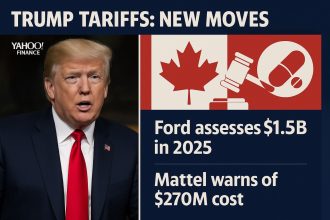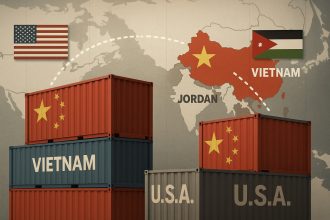You’ve probably noticed that despite all the economic gloom—think recession fears, inflation woes, and global trade spats—oil prices are holding strong. Brent crude is trading at $66.96 per barrel, and WTI (West Texas Intermediate) is at $63.11. Surprising, right? Let’s unpack why oil is defying the odds and what it means for you.
The Current State of Oil Prices
Let’s start with the basics. As of today, Brent crude, the global oil benchmark, is priced at $66.96 per barrel. WTI, its American cousin, is close behind at $63.11. These figures are climbing, which feels counterintuitive when you hear about economic slowdowns. I remember back in 2015 when oil prices tanked, and everyone thought the oil era was over. Yet here we are in 2025, with prices rising despite electric cars and renewable energy hype. It’s a reminder of how deeply oil is woven into global economics.
So, what’s pushing these prices up? It’s a tug-of-war between supply decisions, global demand, and a hefty dose of geopolitical nerves.
OPEC+ Plays Its Cards: Production Increases on the Horizon
One major player in this story is OPEC+, the group of oil-producing nations like Saudi Arabia, Russia, and others. They’ve been carefully managing oil supply for years, and their latest move is a big one. Starting in April 2025, OPEC+ plans to increase production, reversing voluntary cuts of 2.2 million barrels per day over 18 months. They even surprised markets by boosting output by 411,000 barrels per day in May, three times the expected amount (OilPrice.com).
You’d think more oil would mean lower prices, but OPEC+ is playing it smart. Their gradual approach, coupled with flexibility to pause or reverse increases, keeps the market from flooding. Plus, some members have overproduced, so they’re supposed to compensate by cutting back later. It’s like a high-stakes chess game, balancing supply to keep prices stable without crashing them.
Here’s a quick look at OPEC+’s plan:
| Country | Production Increase (May 2025) | Compensation for Overproduction |
|---|---|---|
| Saudi Arabia | Part of 411,000 bpd hike | Yes, by June 2026 |
| Russia | Part of 411,000 bpd hike | Yes, by June 2026 |
| UAE | Additional 300,000 bpd target | Yes, by June 2026 |
| Others (Iraq, etc.) | Part of 411,000 bpd hike | Yes, by June 2026 |
This strategy shows OPEC+ is confident in demand but wary of oversupply, which could explain why prices aren’t dropping despite the extra oil.
Geopolitical Tensions Keep Markets on Edge
Now, let’s talk about the wildcard: geopolitical risks. Oil markets are super sensitive to global tensions, especially in oil-rich regions like the Middle East. Ongoing conflicts or even the threat of them can disrupt supply lines, and markets hate uncertainty. Right now, traders are on edge, pricing in the risk of potential disruptions (European Central Bank).
Think of it like driving past a police car—you slow down, even if you’re not breaking the law. Markets are doing the same, betting on higher prices to hedge against trouble. Beyond the Middle East, U.S.-China trade tensions and other global hotspots add to the jitters. These risks push prices up, counteracting the downward pressure from OPEC+’s production hikes.
How Traders Are Responding to Volatility
With all this uncertainty, traders are finding ways to navigate the choppy oil market. Many are using platforms like PocketOption to trade oil contracts for difference (CFDs). These let you speculate on price movements without owning physical oil. I was chatting with a friend who’s into trading, and she raved about PocketOption’s user-friendly interface and tools for analyzing trends. It’s a way to dip your toes into the market, though trading is risky—only invest what you can afford to lose.
This volatility isn’t just for traders. Higher oil prices hit us all, from gas pumps to grocery bills, since shipping costs ripple through the economy. So, whether you’re an investor or just filling up your car, oil prices matter.
Looking Ahead: What Does the Future Hold for Oil Prices?
So, where are we headed? It’s tough to say. OPEC+’s production increases could push prices down, but geopolitical risks might keep them elevated. Financial forecasts are mixed—some, like Goldman Sachs, predict Brent will average $76 per barrel in 2025, while others are more cautious (Goldman Sachs). Global demand remains strong, especially in emerging markets, but economic slowdowns in places like China could dampen it.
Here’s what to watch:
- OPEC+ Flexibility: Will they stick to their production plan or adjust if prices drop too far?
- Geopolitical Flashpoints: Any escalation in conflicts could spike prices overnight.
- Economic Trends: A global slowdown could curb demand, while growth could sustain high prices.
The oil market is a rollercoaster, reflecting our interconnected world. For now, prices are holding firm, but the balance is delicate. Whether you’re tracking gas prices or exploring trading, staying informed is key.
Final Thoughts
Oil prices are more than just numbers—they shape our daily lives, from fuel costs to the price of goods. As Brent and WTI climb despite economic uncertainty, it’s clear that OPEC+’s calculated moves and geopolitical tensions are calling the shots. Will prices soar if conflicts escalate, or will extra supply bring them down? Only time will tell, but one thing’s certain: the oil market will keep us on our toes.
Thanks for joining me on this dive into the oil world. Got thoughts on where prices are headed? Drop a comment—I’d love to hear your take!





